Last year, I guest-hosted the Parlour Instagram page, which provides a platform to discuss and promote women in architecture. This allowed me to highlight a momentous gathering we held in November in Perth – when about 150 women architects gathered at the inaugural #WorkWomenWisdom event to celebrate being a female architect in 2017, with honest discussions about the opportunities and constraints that we face.
I’ve been an architect for 30 years and I had never seen so many of my female peers assembled in one place. For me it was an overwhelming and emotional experience, but one that was very positive and uplifting.
In some ways it seems absurd that we need to even address these issues at all, but formal research and anecdotal evidence tell us that women leave the architecture profession in droves, and there is a still a marked pay gap when compared with their male colleagues.
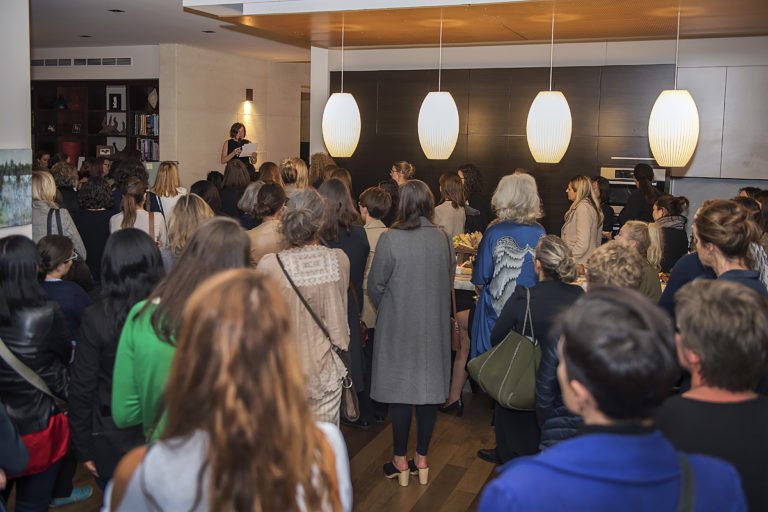
As the first woman president of the Australian Institute of Architects in WA, I’m determined to tackle the systemic and structural issues that have stopped women from participating fully in the workforce. This event was a chance to hear from everyone – members, non-members, registered architects and those who aren’t registered – and to say: We are here, we may not be loud, but we are all keen to support each other’.
A lively discussion took place during the evening, raising many significant questions, as well as valuable thoughts and feedback from attendees.
What’s the gender equity situation in Perth and WA?
According to Parlour research, female students graduate in almost equal numbers to males (between 40% and 45% on average), but female graduates proceed to registration at a much lower rate. In 2012, for example, only 21% of nationally registered architects were female.
In WA the figure is much lower, with only 6.3% of registered architects being female (the lowest rate in the country by far). Supporting a greater number of graduates through the registration process is vital to increasing a more equitable profession.
We face other significant problems in the workplace, too. Two weeks after our #WorkWomenWisdom event, I attended a committee for Perth lunch where Libby Lyons, the CEO of the Workplace Gender Equality Agency, launched the latest data sets. These figures show that the Architecture profession has a pay gap of 22.2% in 2017, and Western Australia has the dubious honour of having the largest gender pay gap (across all sectors) in the country, at 22.8%.
This year, the number of women on boards has not changed, so despite more companies implementing policies and reporting on gender equity issues. Basically, progress is very slow.
In fact, Kate Emery, a journalist at The West Australian, suggested that quotas could be the answer, as a way of accelerating progress towards equity.
A related Instagram question:
Do you think government should introduce quotas – for boards, senior management, elected positions – to increase the number of women at senior levels, at a faster rate?
This question provoked many responses!
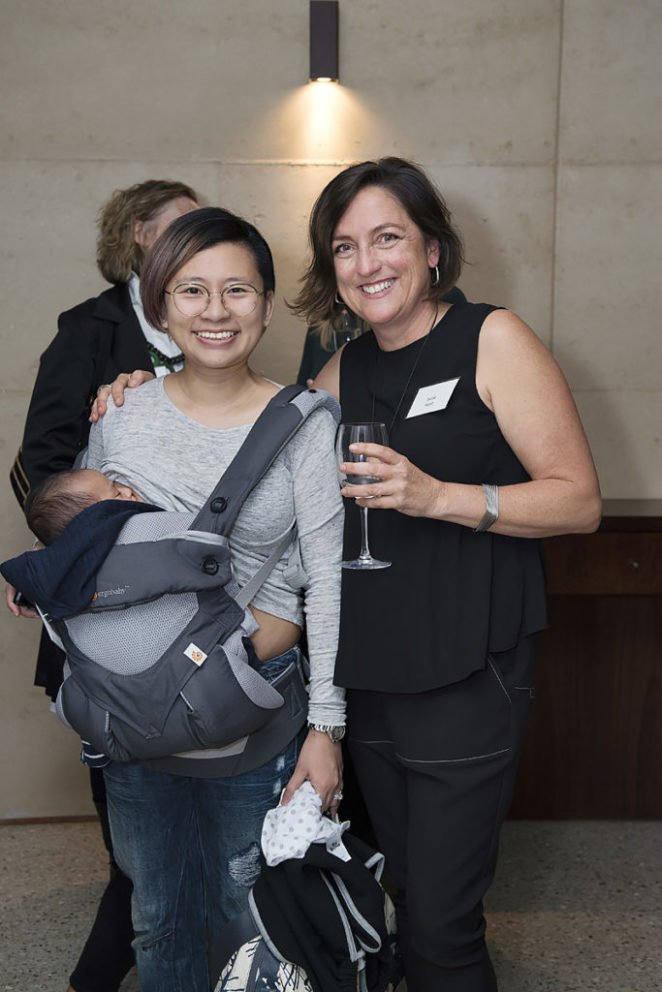
@gillmm5:
Gill the numbers nerd here. My latest calculation of registered architects has women at 22% of the WA register, and 25% in the country. At Parlour we’re about to get the 2016 Census data so I’m very interested to see what the gender pay gap is for architects when we break it down by age.
@r_er91:
I think this would be pretty interesting data, I would take a random guess that it’s maybe getting better in the younger ages? Maybe?
I find this question such a tough one to answer. So many dilemmas. What if there are no females suited to the job? What if they hire a female just because they needed their token female employee? And then there’s the attitude that people might have towards that person if they believe they were only hired because they are female. I think we will eventually start to see more equal numbers at senior levels, it just might not happen as quickly as we wish it would.
@aesthetically yours:
the hiring of architects especially at senior levels, does not happen overnight. If the employer is willing to adopt a proposed quota system then they will be more diligent in headhunting the amazing array of female architects out there or will be required to be patient in order to find the suited female architect for the position – slow change is not good enough, we have been waiting far too long in Perth – bring on the quotas!
Kellygreenop:
Quotas are the only effective method of solving the bias against women that creates the current situation. Studies in other professions shows that quotas for women replace mediocre men with much better women. The current situation is not merit-based but bias-based.
Catlr:
yeah I went to this event and heard those figures. It’s ridiculous how low female arch representation is ????
Back to the evening’s discussion.
We asked women at the #WorkWomenWisdom event to share their major workplaceconcerns, and we received many different responses. Here’s a varied selection:
“It would be great if the office had access to an on-call nanny service that you could use in an emergency.”
“I’d love to see some sort of noticeboard for women wanting to work in association, joint ventures, partnerships while negotiating the mothering years. Loved hearing your talk and life experience – so good to share.”
“Can we have a “Friends of the Institute” category in Institute membership?”
“Lack of mentors in industry at executive level who are women. How do I crack the ceiling?”
“BMW [Building Management and Works] needs to update policies to insist that panel members with women architects in senior positions are given tender preference.”
“It would be great to hold CPD events that are not in the ‚Äòwitching hour’ (4.30 – 7pm).”
“Though not currently high on the agenda, I feel that Built Environment education is important. It aims to instill in the next generation an understanding that their built environment is physically and mentally their life support system. They are made aware of the benefits of good architecture and also that they can playa part in making it the best that it can be. One consequence is the promotion of architects to the future movers and shakers.”
“Since the Institute is so busy auditing people to check up on registered architects, would they consider auditing firms that are underpaying graduates? We have a systemic problem/habit in the industry of underpaying graduates, particularly women!”
“How can the Institute help the universities connect students and graduates to the industry? This is the starting point to supporting women’s careers.”
“The hardest thing is maintaining your registration after having babies.”
[WA is the only state in Australia that provides a maximum two-year break from registration, following family leave, an issue that I’m working hard to address].
“After I resigned to have kids, I had to complete my registration logbook again. It’s hard to find the time, and I fell like I’ve been penalised. Being in that situation made me think I’d made the wrong choices.”
“After you have kids, it’s easy to lose your confidence. You can’t apply for full-time roles and there aren’t many part-time jobs available.”
“Bizarrely, many construction companies offer better support for women in the workplace than many architecture studios, and we’re losing women at a massive rate, It’s crazy.”
“The issue of insurance is a big problem. You can only obtain insurance if you are a practicing architect, when you have a quantifiable risk. If you aren’t practicing in WA, you can’t get insurance; so you can’t maintain your registration in this state, even though you can continue to be registered in other states and countries.”
And some of the Instagram responses to the same question:
@cultivate_collective:
I’m late to the game, just going back through and reading these posts from last week.such a fantastic conversation Thankyou! Totally agree with the need for mentors at senior levels of the profession.
@kathytrelease:
Tried to get friends of the institute going in NSW about 17 years ago -very hard road to get any change to happen . but don’t be daunted
@ironsmcduff:
Ostracising other women
@architecturewithelle:
The 3rd point regarding connecting the universities and graduates with the institute is interesting to hear. SONA and EmAGN are apart of the institute for that very reason. If students and graduates get involved with these organisations we have a better chance of supporting woman’s careers!
Continuing the evening’s discussion, we addressed these questions:
How does gender equity in the profession stack up, in Perth?
GET WA – the local gender equity taskforce, which is seeking funding for a range of activities next year – has analysed of the gender composition of Perth’s 20 largest architectural firms (those with more than eight staff, and working off available website information only).
That analysis revealed that of the 89 directors leading these firms, only seven are female. This disparity results in women staying in lower paid roles for longer, or leaving the profession more readily, compared to their male counterparts), which in turn leads to the gender pay gap.
GET WA also found that women are also under-represented in many of the prizes, awards and chair positions within the industry. In the 34-year history of the Architects -Award (WA), only one female has received the prize. Similarly, in the 56 years of the Australian Institute of Architects Gold Medal, only two females have been recognised.
While this is most certainly a factor of the above problems (as most prizes of this nature go to those in leadership positions), this may also be an element of female architects working under-the-radar and not being willing to put themselves forward.
GET WA asserts that more female architects need to be encouraged and inspired to enter themselves and others into awards programs and become more visible in the architectural community generally, and has devised a program of activities to facilitate that goal.
Why a women only event – isn’t that a bit sexist?
I decided to hold the first #WorkWomenWisdom event at my own home because I wanted to create a comfortable environment for women to openly discuss their needs and opinions. At the same time, I’m conscious of the fact that men will play a pivotal role in bringing about gender equity at work.
And our next #WorkWomenWisdom event – to be held on International Womens Day, 8 March 2018 – will be open to everyone. We all know that gender equity and equality isn’t just a women’s issue: these issues will start to affect more men as they take on more caring roles in future.
We want to consider everybody’s different experiences and requirements, and work together to reduce the barriers that prevent people from fully participating in the workforce.
Networking can be daunting; how can we improve?
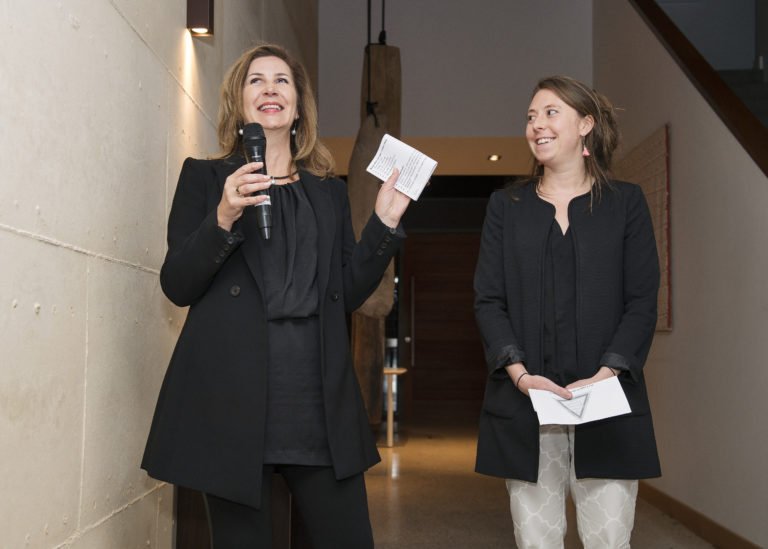
My friends Jen Ehlers@jen_ehlersand Kate Taylor @k2taylor56work at EY, which has some terrific programs and initiatives around gender equity in the workplace (this is not just an architecture problem, although these issues are particularly pronounced in our profession).
I invited Jen and Kate to present their best networking tips to our audience, because we could all use a little help in building more constructive networks.
Jen and Kate spoke about the importance of being authentic, taking an interest in the people you are meeting for the first time, and taking a long-term view when building professional contacts. They emphasized the importance of handing out business cards to maintain contact, then follow up the next day with an email, and to arrange to get together for coffee. LinkedIn is also a great resource for professional networking both within the profession and more broadly.
Q U E S T I O N S:
What stops you from pursuing networking opportunities?
How might you improve your own networking skills?
From Instagram:
@beksnaps:
Thanks for these tips. A barrier I find is that most networking opportunities are in that early evening timeslot, a clash with intense family times! Can’t think of great alternatives though, except for making the most of networking within working hours. or maybe you have some other ideas?
Do you have an elevator pitch?
Jen and Kate also spoke about an “elevator pitch”, a term that was new to many. Basically, they said, it’s a 30-second spiel about who you are, what you do, and where you work – the kind you might use to introduce yourself if you were stuck in an elevator with strangers.
I’ve observed that men and women seem to have different ways of approaching networking, and there are also differences between the way my generation and younger socially networked people connect. I believe that as women it can be difficult to start that elevator pitch in a new social environment.
Maybe as women we just need to celebrate each other’s career paths and not feel quilty or envious of another’s choice, much like men seem to be able to do.
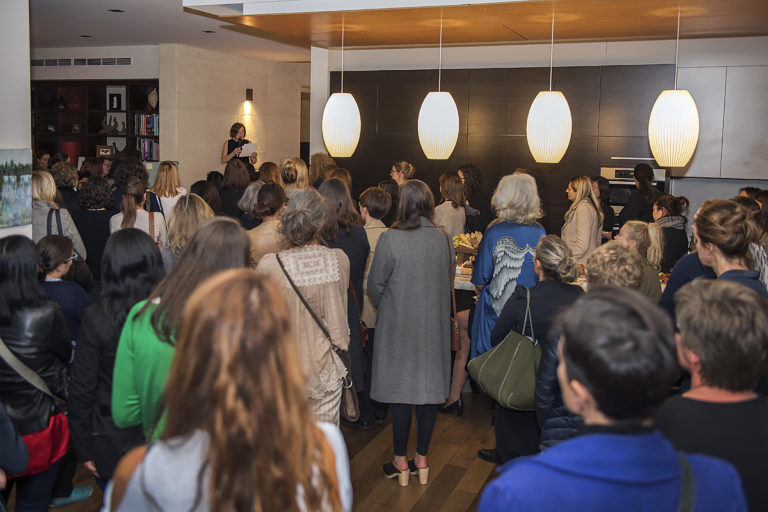
Positive feedback
After the #WorkWomenWisdom event I received a lot of positive feedback from attendees, some of which I’ll share here:
“One thing I would like to see more of, if possible is site visits to architecture including the pros and cons of that project. I guess if we see more local examples, done by people who we aren’t working with, then collectively we get ideas off each other, education, and a better understanding of the business of architecture. Maybe this is a little off target, but it sounds exciting to me.”
And another one:
“Thank you for a great night of lots of women and wisdom, and for taking the initiative to lead the Institute in a new exciting direction. It was great meeting so many women in architecture (there are actually quite a few of us! Who knew?!) and I learned new things I had never heard discussed within the industry before. I look forward to many more women’s events in the future.”
And lastly:
“I have been purposefully engaging in conversations with friends and colleagues, who work in architecture, law, health, accounting and other professions, about the many challenges we face as women with regards to juggling work and family life. These are amazing women, many of which have lived overseas, worked in high profile corporate positions and have so much wisdom and experience to bring to the table. Through these conversations and also my own experience I feel there are several items that have become of particular interest to me. I believe that our engagement as architects with other professions is imperative to our growth and adaption. We are very good at promoting ourselves – to ourselves, but not so much to the wider public. Preaching to the converted if you like. So I am a huge advocate of your push to provide opportunity and encourage non-architects to join the Institute.”
The Cartoon on Saturday
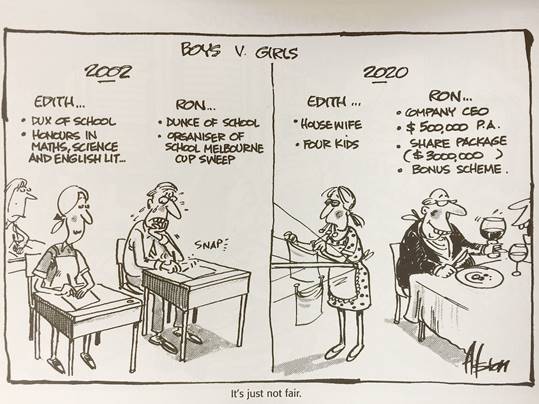
I concluded my week hosting Parlour by sharing this cartoon by Dean Alston that my dad cut out of The West Australian in 2002, just after I had my fourth child. Dad thought it was a joke, but I remember thinking at the time: “This is so bloody true”.
I had really hoped that by 2020 this wouldn’t be the case, and we are making progress, however sometimes I think we take three steps forward and two steps backwards!!
Because I have four children, three of them boys, I’m keen to reshape the workplace so that my daughter can make the most of her career, and my sons can be more involved in their families, should they choose to have them.
Which brings me to the research of Professor Lyndall Strazdins, who found that men and women have different work hour limit thresholds before their mental health is affected, because women have more caring responsibilities outside the workplace.
For me, this raises an important question: what sort of equality are we trying to achieve? Do we want to match the long hours that many men work, or do we want to reframe the workplace so that men and women are more able to care for children and aging parents?
While I’m President of the Institute in WA, I intend to do my utmost to address these issues and to march towards equality, and I’m really grateful for the efforts of many of my colleagues who are pushing for and supporting these changes. At the moment, I think progress is too slow – the gender pay gap in Australia will take 300 years to close at current rates – so we need to use more incentives to promote women and their valuable contributions.
Please join the national group we’ve established to continue this important conversation, on LinkedIn. Connect with me at Suzie Hunt Architect, and join our group #WorkWomenWisdom.
The ACT Chapter is also planning to hold a #WorkWomenWisdom event, and similar gatherings may follow in other states. If you are keen to organize one in your city or town, please contact your local Institute office.
The next #WorkWomenWisdom event will take place on 31 May 2018 – please contact the WA Chapter office for more details and to register your attendance.


